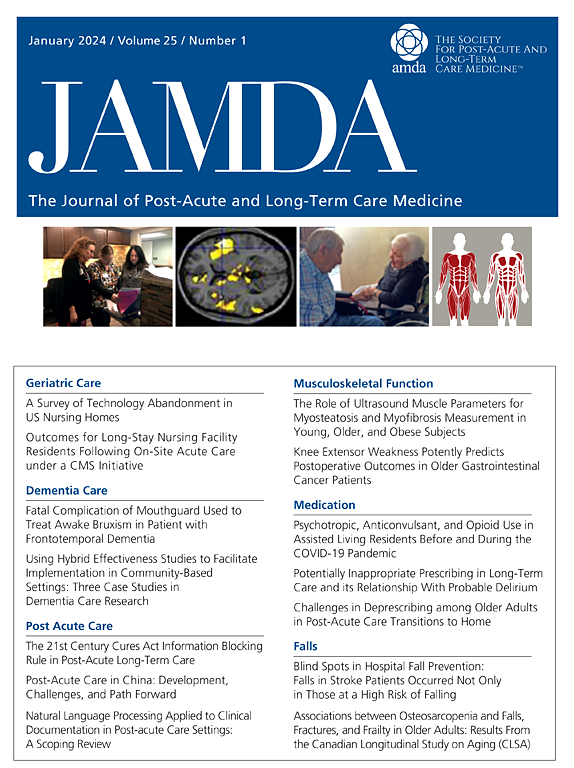工会对美国长期护理机构直接护理人员的影响:系统回顾。
IF 4.2
2区 医学
Q2 GERIATRICS & GERONTOLOGY
Journal of the American Medical Directors Association
Pub Date : 2024-09-03
DOI:10.1016/j.jamda.2024.105236
引用次数: 0
摘要
目标:为满足美国对直接护理工作者(DCW)日益增长的需求,需要采取结构、组织和政策相关的解决方案。劳动力工会化可能就是这样一种机制;然而,人们对其对结果的影响仍然知之甚少。研究工会化对 DCWs 的财务状况、就业态度以及患者预后的影响:设计:对 AgeLine、CINAHL、PubMed、Scopus 和 Web of Science 进行系统检索,检索时间从数据库建立之初至 2024 年 6 月 20 日。我们纳入了采用观察性、准实验性和实验性设计的同行评审实证研究:研究涉及在家庭和长期护理环境中提供护理服务的家庭护理工作者。我们关注的研究重点是说明家庭护理员的经济成果(工资、补偿、福利)、就业成果(工作满意度、离职率)以及家庭护理员及其患者的健康相关成果:使用 Covidence 筛选符合纳入标准的研究。研究特征按预先确定的领域进行人工摘录。采用 Downs and Black 工具进行质量评估。结果:共有 19 项研究符合纳入标准:共有 19 项研究符合纳入标准;这些研究以观察性研究为主(94%),有地方样本(50%)和全国样本(50%)。三项研究的重点是报酬,所有研究都发现,加入工会与 DCW 工资和福利的提高有关。七项研究侧重于就业,发现工会与更高的工作满意度、质量和留任率相关,尤其是在养老院工作人员和家庭保健助理中。工会化的工作场所报告了更好的护理质量和安全,包括更少的伤害和更好的设备供应。工会化对患者疗效的影响结果不一,尤其是对养老院居民的影响。总体而言,研究的质量参差不齐,方法和抽样的局限性影响了研究的可靠性:DCW 工会化通常与较高的工资、福利和工作满意度以及较低的人员流动率相关;然而,工会化对工人和患者结果的影响在不同研究中各不相同。这些研究的总体质量一般或较差,这凸显了在这一领域进行更严格研究的必要性。本文章由计算机程序翻译,如有差异,请以英文原文为准。
The Impact of Unions on US Direct Care Workers in Long-Term Care Settings: A Systematic Review
Objectives
To meet a growing demand for direct care workers (DCWs) in the United States, structural, organizational, and policy-related solutions are needed. Unionization of the workforce may be one such mechanism; however, its impact on outcomes remains poorly understood. To examine the impact of unionization on DCWs’ financial well-being and employment attitudes, as well as patient outcomes.
Design
A systematic search of AgeLine, CINAHL, PubMed, Scopus, and Web of Science from database inception through June 20, 2024. We included peer-reviewed empirical studies that used observational, quasi-experimental, and experimental designs.
Setting and Participants
Studies pertained to DCWs who provided care in the home and long-term care settings. We focused on studies that illustrated the financial outcomes of DCWs (wages, compensation, benefits), employment outcomes (job satisfaction, turnover), and health-related outcomes of DCWs and their patients.
Methods
Covidence was used to screen studies for inclusion criteria. Study characteristics were abstracted manually by prespecified domains. The Downs and Black tool was used for quality assessment. The Preferred Reporting Items for Systematic Reviews and Meta-analyses (PRISMA) guideline was followed.
Results
A total of 19 studies met inclusion criteria; they were predominantly observational (94%), with local (47%) and national (53%) samples. Three studies focused on compensation and all found that unionization was associated with higher wages and benefits among DCWs. Seven studies focused on employment, finding that unionization was associated with greater job satisfaction, quality, and retention, particularly among nursing home staff and home health aides. Unionized workplaces reported better care quality and safety, including fewer injuries and better equipment provision. Unionization's impact on patient outcomes showed mixed results, particularly among nursing home residents. Overall, the quality of the research studies varied, with limitations in methodology and sampling affecting reliability.
Conclusions and Implications
Unionization among DCWs was generally associated with higher wages, benefits, and job satisfaction, as well as reduced turnover; however, its impact on worker and patient outcomes varied across studies. The overall quality of the studies was fair to poor, highlighting the need for more rigorous research in this area.
求助全文
通过发布文献求助,成功后即可免费获取论文全文。
去求助
来源期刊
CiteScore
11.10
自引率
6.60%
发文量
472
审稿时长
44 days
期刊介绍:
JAMDA, the official journal of AMDA - The Society for Post-Acute and Long-Term Care Medicine, is a leading peer-reviewed publication that offers practical information and research geared towards healthcare professionals in the post-acute and long-term care fields. It is also a valuable resource for policy-makers, organizational leaders, educators, and advocates.
The journal provides essential information for various healthcare professionals such as medical directors, attending physicians, nurses, consultant pharmacists, geriatric psychiatrists, nurse practitioners, physician assistants, physical and occupational therapists, social workers, and others involved in providing, overseeing, and promoting quality

 求助内容:
求助内容: 应助结果提醒方式:
应助结果提醒方式:


